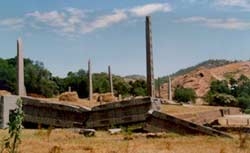China is preparing to launch a major project aimed not only at enhancing the country’s astronomical research program but also at promoting the use of its space station complex.
According to Space.com, Chinese astronomers recently unveiled an ambitious new project. The Chinese Space Survey Telescope, also known as the Chinese Space Station Telescope (CSST), named “Xuntian” (meaning: “surveying the sky”) is expected to be launched next year.

A large telescope with two solar panels resembling wings in orbit above Earth. (Photo: Space.com).
Xuntian is bus-sized and features a primary mirror with a diameter of 2 meters. This ultra-violet optical space telescope will orbit alongside China’s Tiangong Space Station. Its nominal operational lifespan is 10 years, but the mission could be extended.
Xuntian is designed to surpass the Hubble Space Telescope of NASA. Xuntian will orbit the Chinese space station, where astronauts can occasionally perform maintenance.
Lin Xiqiang, Deputy Director of the China Manned Space Agency, stated that Xuntian is expected to make breakthroughs in astrophysics, exploring dark matter, dark energy, the Milky Way galaxy, and other neighboring galaxies, as well as the formation and evolution of stars and exoplanets.
According to Mr. Lin, the Xuntian telescope is equipped with a 2.5 billion pixel high-resolution camera that will conduct deep-field observations covering an area of 17,500 square degrees, as well as precise observations of various celestial objects.
Field of View 300 Times Larger than Hubble
Scheduled to be launched into Earth orbit next year by a Long March 5B rocket, Xuntian will provide high-resolution panoramic views of the universe with spatial resolution comparable to that of the Hubble Space Telescope. However, China’s “celestial eye” boasts a field of view 300 times larger than that of Hubble. The field of view refers to the area of the sky that the telescope can observe at one time.
In an interview last year with Xinhua News Agency, Li Ran, a project scientist from the CSST scientific data reduction program, used an analogy of photographing a flock of sheep to illustrate the capabilities of the CSST Xuntian.
Mr. Li stated: “Hubble can see one sheep, but CSST can see thousands, all at the same resolution.”
Furthermore, this telescope will orbit the space station to perform independent long-duration flights and observations. Lin indicated that it is designed to dock temporarily with the Tiangong Space Station so astronauts can assist with maintenance and upgrades.

A cylindrical satellite floating above Earth. (Photo: Space.com).
World’s Most Advanced Technology
In an interview with China Central Television (CCTV), Zhou Jianping, the chief designer of China’s manned space program, also forecasted the capabilities and contributions of Xuntian.
“The Xuntian telescope is the most important scientific project since our country [China] initiated its space station program. It is the scientific foundation that the Chinese astronomical community eagerly anticipates and represents the advanced state science and technology in astronomy,” Mr. Zhou stated.
This telescope is also the most advanced among all existing astronomical research projects worldwide, Mr. Zhou added. “It is expected to significantly drive the development of astronomy, elevate our [China’s] astronomical research to an international level, and help Chinese astronomers become leaders in this field.”
Testing and Assembly
During routine observations, the Xuntian space telescope will operate independently in the same orbit as China’s Tiangong Space Station but at a considerable distance.
Xu Shuyan, the chief designer of the Xuntian optical facility and a researcher from the National Astronomical Observatories of the Chinese Academy of Sciences, stated: “We are still developing the prototype. Currently, we have completed the development of all subsystems, components, and parts, and we are preparing for testing after they are assembled.”
“Next, we will begin developing the telescope model and start researching the flight components. After that, we will conduct tests with the Xuntian platform and perform tests at the launch base before it is launched,” Mr. Xu told CCTV.

A T-shaped space station floating above Earth. (Photo: Space.com)
Open Questions
While the leaders of China’s space agency take pride in the capabilities of Xuntian, some international researchers remain skeptical.
Tom Brown, an astronomer and head of the Hubble Mission Office at the Space Telescope Science Institute (STScI) in Baltimore, Maryland, USA, stated: “For facilities open to the international scientific community, such as Hubble or Webb, we provide important data and software that allow researchers to optimally plan their scientific programs.”
Mr. Brown told Space.com: “In contrast, there is not much publicly available information about the specific capabilities of the Chinese Space Station Telescope, making it difficult to assess how it will enable similar research.”
From the limited information disclosed, Mr. Brown noted that it seems the Chinese Space Station Telescope will have a larger field of view than Hubble, but a smaller mirror, lower light-gathering area, and lower spatial resolution.
The spectral resolution appears significantly lower than that of Hubble, and Xuntian does not extend into the far ultraviolet region, which is below 200 nanometers.
Mr. Brown remarked: “There are many open questions at this time, including whether the space-based telescope can be successfully launched, whether it can be maintained in the space station environment, the duration of observations, and how the data will be calibrated.”
He added: “Hubble continues to lead the field in every way, measuring the value of a world-class research facility, pursuing breakthrough projects in every area of astrophysics. I am curious to see how the story of the Chinese Space Station Telescope will unfold.”





















































